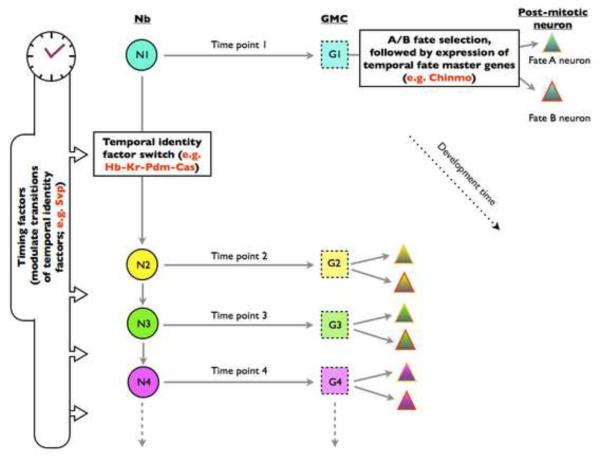Figure 3.
A model of birth time/order-dependent neuron type specification in Drosophila CNS. As neurogenesis proceeds, a distinct set of temporal identity factors (as indicated with different colors), which sequentially express in the Nb (circle) and its GMC progeny (square), determines their individual temporal identities at specific time points. On top of the temporal identity factors, certain timing factors are used to regulate their temporal expression profiles, controlling the switch of temporal identity windows. Upon birth of post-mitotic neurons (triangle), temporal fate master genes start to express, dictating the terminal cell fates. The molecular asymmetries during neuron-producing mitoses may confer different fates on sister neurons born from the same GMCs. Together, multiple layers of temporal modulations underlie the production of many distinct neurons from a common progenitor.

